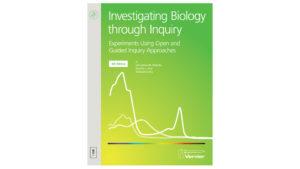Introduction
The circulatory system is responsible for the internal transport of many vital substances in humans, including oxygen, carbon dioxide, and nutrients. The components of the circulatory system include the heart, blood vessels, and blood. Heartbeats result from electrical stimulation of the heart cells by the pacemaker, located in the heart’s inner wall of the right atrium. Although the electrical activity of the pacemaker originates from within the heart, the rhythmic sequence of impulses produced by the pacemaker is influenced by nerves outside the heart.
Objectives
In this Preliminary Activity, you will use a Heart Rate Monitor to determine a subject’s heart rate. After completing the Preliminary Activity, you will first use reference sources to find out more about the heart, the cardiovascular system, and heart rate before you choose to investigate a researchable question dealing with heart rate. Depending on sensor availability and your interest, you might decide to use another sensor, such as a Blood Pressure Sensor, in addition to a Heart Rate Monitor. Some topics to consider in your reference search are:
- heart
- heart rate
- cardiovascular system
- physical fitness
- maximum cardiac rate
- homeostasis
- sympathetic nervous system
- parasympathetic nervous system
- heart-rate recovery time
- fitness index
- baroreceptor reflex
- diving reflex
Sensors and Equipment
This experiment features the following sensors and equipment. Additional equipment may be required.
Correlations
Teaching to an educational standard? This experiment supports the standards below.
- International Baccalaureate (IB)/Sports, Exercise, and Health Science
- 2.2 Structure and function of the cardiovascular system
- 9. Fatigue
- International Baccalaureate (IB) 2025/Biology
- B3.2.4—Measurement of pulse rates
- C3.1.14—Feedback control of heart rate following sensory input from baroreceptors and chemoreceptors
- D3.3.11—Changes in blood supply to organs in response to changes in activity
Ready to Experiment?
Ask an Expert
Get answers to your questions about how to teach this experiment with our support team.
- Call toll-free: 888-837-6437
- Chat with Us
- Email support@vernier.com
Purchase the Lab Book
This experiment is #15 of Investigating Biology through Inquiry. The experiment in the book includes student instructions as well as instructor information for set up, helpful hints, and sample graphs and data.


